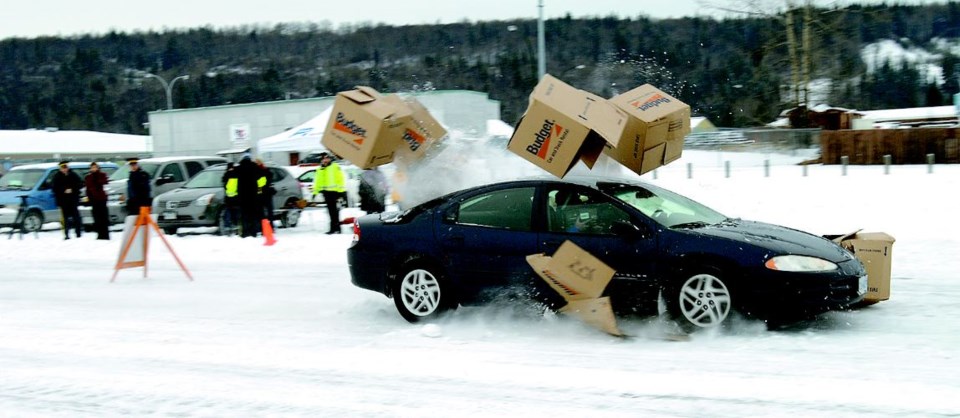Both Prince George RCMP and CN Rail Police Services are asking drivers to use caution as winter conditions envelope the roads.
Leaving early, slowing down and driving to the road and weather conditions are among the tips provided, as are driving on good winter tires, making sure windows are free of frost and snow and using headlights.
"We have seen a number of collisions over the last few days that could have been avoided if these precautions were taken," Prince George RCMP said.
Taking extra care around railway tracks is also encouraged.
"Icy roads, reduced visibility and storms are a potentially dangerous combination and we encourage people to drive safely and use caution around railway crossings," said CN Police Services Chief Stephen Covey. "And for snowmobile operators, their first responsibility must be safety. Railway tracks should never be used as a trail. Riding on or along railway tracks can cost you your life. "
Snowmobiles should only cross tracks at designated crossings. Trespassing on railway tracks or property - by snowmobiles, or cross country skiers, or snowshoers, or others - is illegal and dangerous.
Reduced visibility and sounds from a storm might make it more difficult to see or hear a train coming, so if you're snowshoeing or skiing near a designated crossing, don't wear headphones and be aware of your surroundings
Winter tires are required on the area's highways. If you're caught without them, police can ticket you and make you turn back.
Moreover, you're less likely to slide on the road if you're on winter tires - all season tires can begin to lose their elasticity and grip on the road at temperatures below 7C, according to Transport Canada.
Driving without winter tires will not void your insurance if you have a claim, according to the Insurance Corporation of British Columbia, but if you get in a crash where winter tires could have helped, not having them may affect whether - or how much - you are at fault.
Where there is no snow, there is often black ice during the winter - especially in shaded areas, on bridges and overpasses and at intersections where car exhaust and packed snow freeze quickly.
If you drive over black ice and start to skid, ease off the accelerator, and look and steer smoothly in the direction you want to go.
"Don't brake, this will make the situation worse," ICBC advises. "You may need to repeat this manoeuvre several times until you regain control."
The same approach should be used if you're hydroplaning - when the tires lose contact with the road surface and float on a film of water.
"If you find yourself hydroplaning, ease off the accelerator and keep steering in the direction you want to go," ICBC says. "Avoid braking."
Potholes can be another hazard during cold and wet weather.
"For all types of winter hazards, remember two key tips: reduce your speed and increase your following distance. The more time you have to react to any hazard the better," ICBC says.



